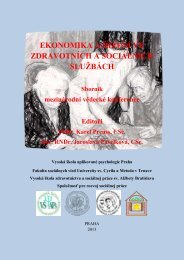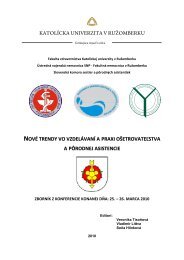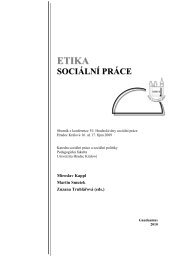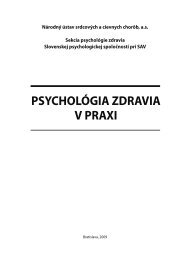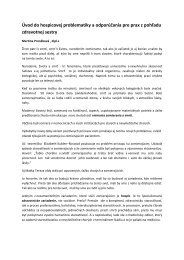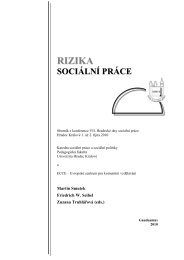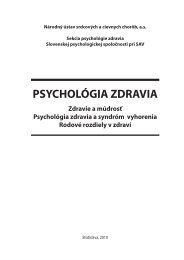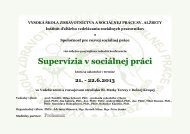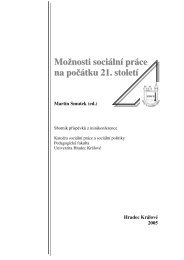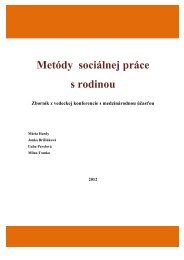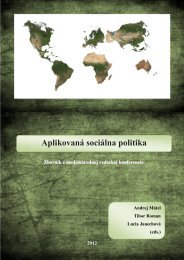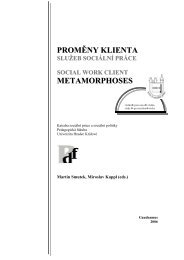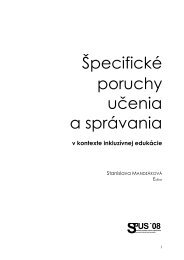Zmena klÃmy â možný dopad (nielen) na obyvateľstvo - Prohuman
Zmena klÃmy â možný dopad (nielen) na obyvateľstvo - Prohuman
Zmena klÃmy â možný dopad (nielen) na obyvateľstvo - Prohuman
You also want an ePaper? Increase the reach of your titles
YUMPU automatically turns print PDFs into web optimized ePapers that Google loves.
school setting described how she put the pictures (of the different landscapes)<br />
on the interactive white board and explored the journey using the poem, maps<br />
and sequencing. Another educator in a creche setting used the poem as part<br />
of a movement activity in the creche yard, where the children acted travelling<br />
through each landscape and discussed alter<strong>na</strong>tive ways to travel. While both<br />
educators applied the suggested learning experience to their own context, they,<br />
nonetheless, tested the poem and landscapes as a method for teaching about the<br />
wider world, exploring distance and projecting the diversity and expanse of parts<br />
of Africa. The results provided suggest that the programme is not overly dependent<br />
on the teacher’s capacity in global citizenship education to meet its learning<br />
objectives.<br />
The data collected here support the findings from phase one of the research,<br />
in indicating children’s developing capacity to articulate and discuss global justice<br />
issues within the ages considered. Older childen more than younger children<br />
were reported to be able to engage in and learn through discussion around the issues<br />
raised. Younger children, on the other hand, were reported to have responded<br />
to the issues raised through drama, art and play. One educator described how:<br />
“The children loved the Kenyan play corner. I wasn’t sure if they really got the story<br />
and then I saw them holding a stick like Mama Panya and I could see that they had<br />
got it. They couldn’t necessarily discuss it but you could tell they had got it from<br />
the way they played it out.” (Educator: Pre-school setting)<br />
The findings support Brunerian theory with regard to children’s emergent capacities<br />
to engage with complex ideas at a level appropriate to their development<br />
(Bruner, 1960).<br />
• Connecting with People and Places<br />
The results of phase three of the research indicated a high level of emotio<strong>na</strong>l connection<br />
across the research settings, between the children and the characters in<br />
the materials. The following quote is indicative of the <strong>na</strong>ture of the responses.<br />
“I enjoyed building the relationship between Adika and the children, emphasising<br />
the similarities and differences between them. They could relate to him as their<br />
friend.” (Educator: Pre-school setting)<br />
These findings reflect a relationship established between the children and the<br />
characters which is characterised by equality and respect. There was no evidence<br />
of children perceiving the characters as being “essentially different” but of being<br />
interested both by what they had in common and by how their lives differed.<br />
Several of the participant educators stated that children from different minority<br />
backgrounds recognised specific connections between their lives and the Kenyan<br />
176




